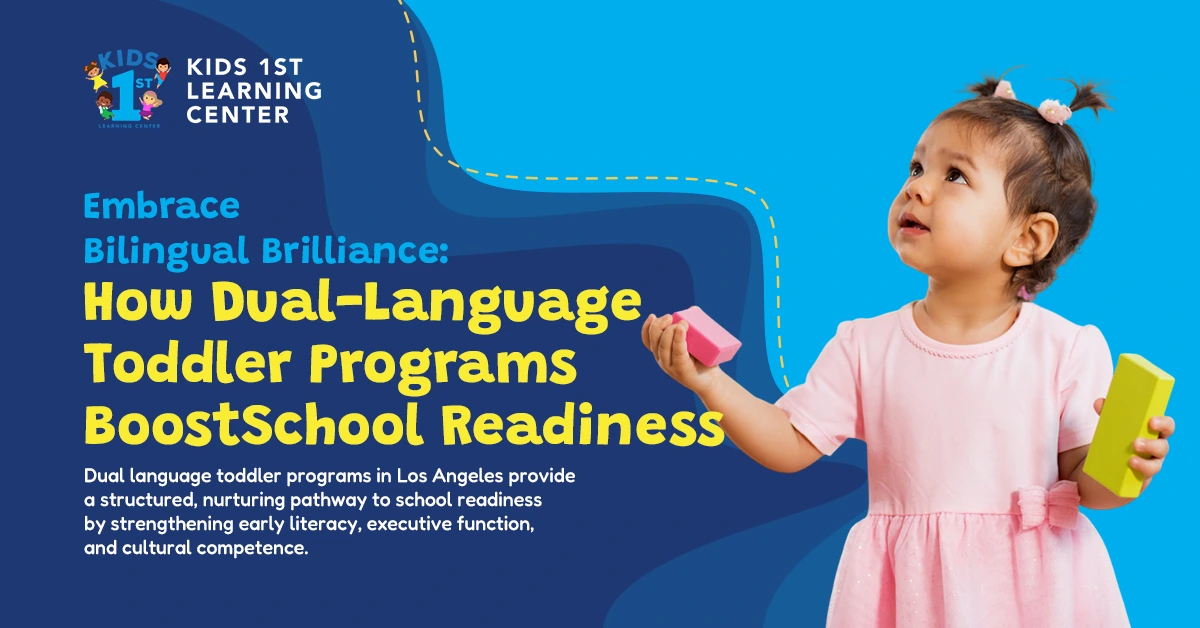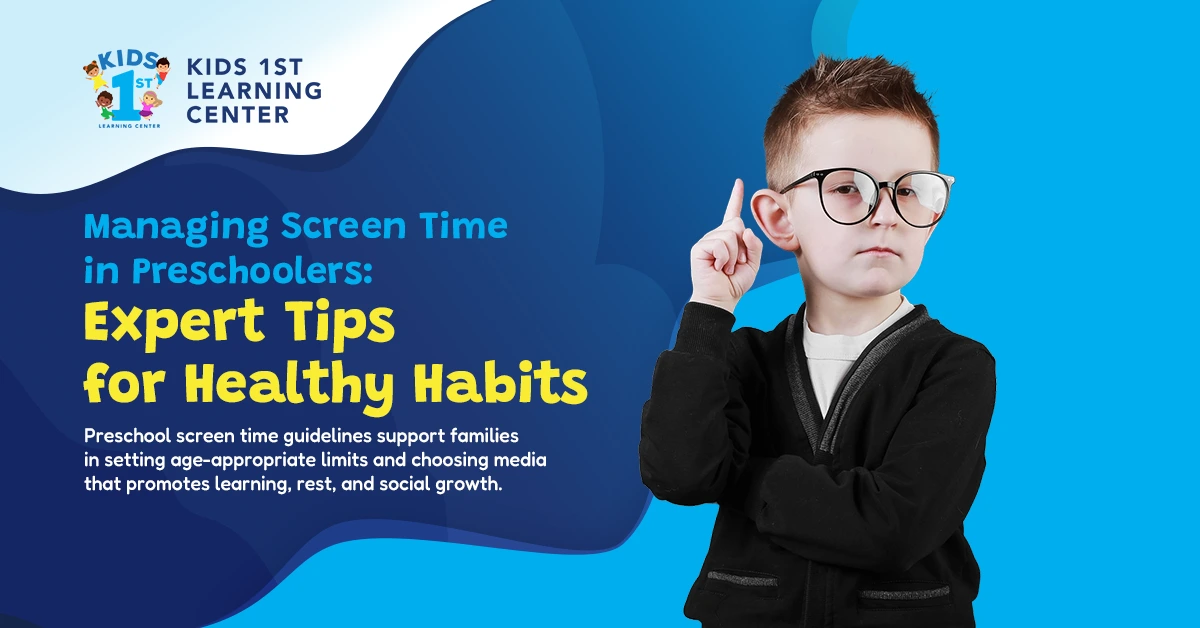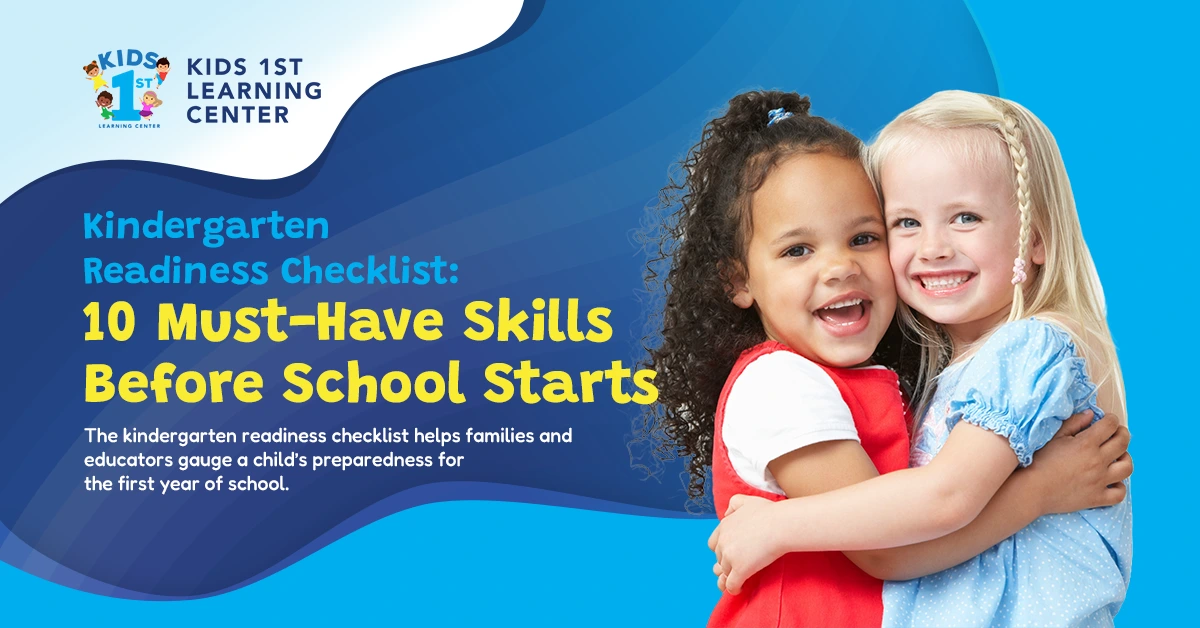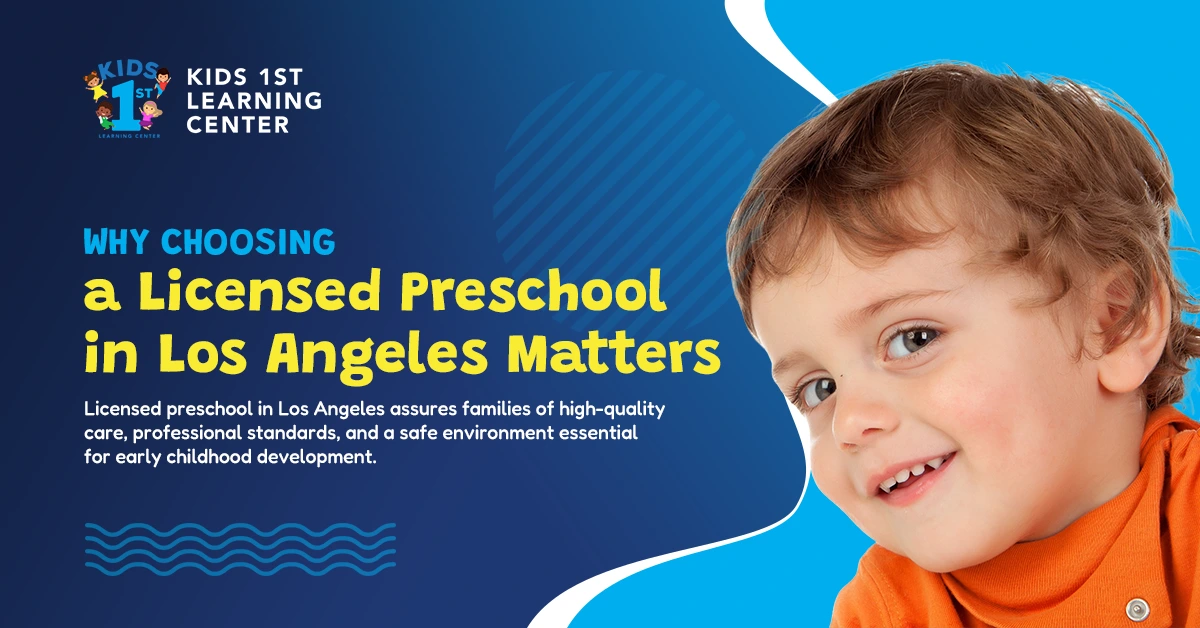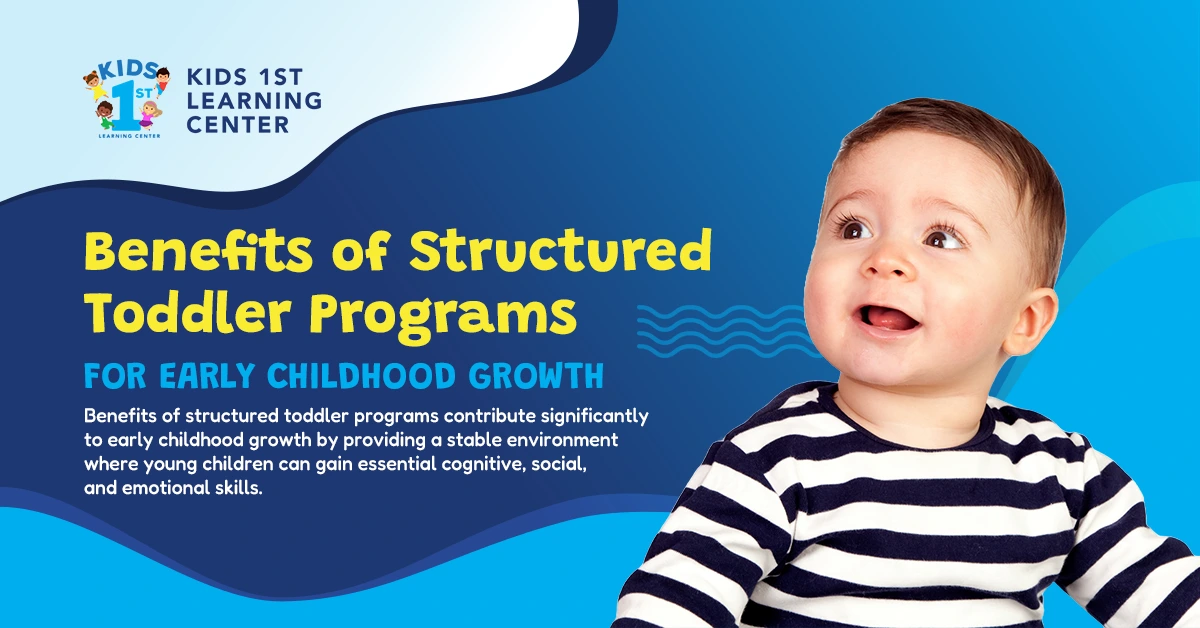Choosing a half-day preschoolprogram is a significant decision for any parent. Finding a nurturing environment that accommodates your family’s schedule and supports your child’s developmental milestones is essential.
At Kids 1st Learning Center, we understand the specific needs of young learners and the importance of selecting a half-day program that aligns with your educational goals and values. This guide will explore key factors to consider when choosing a half-day preschool, ensuring you make the best choice for your child’s early learning journey.
How to Choose the Best Half-Day Preschool for My Child
Selecting the right curriculum is crucial for your child’s early education. A robust curriculum should cover various developmental areas, making it a critical component to examine:
- Cognitive Skills: Engaging in activities that boost logical thinking and decision-making.
- Emotional and Social Development: Initiatives encouraging empathy, teamwork, and self-expression.
- Physical Growth: Exercises and games that improve fine and gross motor skills. This structured approach ensures a well-rounded development, preparing children for future educational challenges.
Staff Qualifications: Understanding Educator Credentials and Experience
The competence and passion of the teaching staffcan dramatically affect your child’s preschool experience. Here are the key qualifications to look for:
- Educational Background: Appropriate degrees and certifications in early childhood education.
- Experience: Extensive experience with early learners, which enhances educational delivery.
- Ongoing Training: Regular updates in educational strategies and child care standards. Ensuring the educators are well-qualified and continually trained reflects a preschool’s commitment to high educational standards.
Safety Measures and Facility Standards: What to Expect
Safety and facility standards are non-negotiable when it comes to choosing a preschool. Important factors include:
- Secure Facilities: Comprehensive security measures to ensure child safety.
- Sanitation Practices: High standards of cleanliness and hygiene.
- Emergency Preparedness: Established protocols for handling emergencies effectively. A preschool that adheres to stringent safety protocols provides a secure environment conducive to learning and development.
Selecting the best half-day preschool involves a careful analysis of the educational content, staff expertise, and the safety of the facility. By focusing on these areas, you can choose a preschool that supports your child’s growth and aligns with your family’s needs.
Affordable Half-Day Preschool Programs Near Me

Finding anaffordable half-day preschool that fits yourfamily’s needs and budgetcan seem daunting. However, you can navigate this landscape effectively with the right approach and resources. By being informed and proactive, you can identifya preschool program that supports your child’s developmental growth and aligns with your financial parameters.
Researching Local Options: Tools and Resources
Finding an affordable half-day preschool program requires effective research strategies. Here’s how to begin:
- Online Directories and Reviews: Utilize websites that list local preschools and provide parent reviews.
- Community Boards and Social Media Groups: Engage with local community boards or Facebook groups where parents share experiences and recommendations.
- Visit Local Schools: Schedule visits to nearby preschools to get a firsthand look at the facilities and ask about pricing models.
Exploring these resources will give you a clearer picture of the options available and help you narrow down the best ones for your budget and location.
Comparing Costs: What Influences the Price of Preschool?
Understanding what goes into the cost of preschool programs can help you manage your budget better. Key factors include:
- Location: Preschools in metropolitan areas or upscale neighborhoods often have higher fees.
- Program Offerings: Enhanced curricular activities like foreign language classes or organic meal plans can increase costs.
- Teacher-to-Child Ratios: Lower ratios often mean higher quality and cost due to more personalized attention.
These elements can significantly impact pricing, enabling you to assess what aspects you’re willing to invest in more heavily.
Financial Assistance and Subsidies: Finding Support
For many families, financial assistance can make preschool more accessible and affordable. Consider these avenues:
- Government Programs: Look into state and federal programs like Head Start or state-funded preschool initiatives that offer financial aid.
- Scholarships and Grants: Some preschools provide scholarships based on need or merit.
- Flexible Spending Accounts: Utilize FSAs to pay for preschool with pre-tax dollars, effectively reducing the overall cost.
Selecting an affordable preschool program involves careful research and understanding the factors affecting pricing. Using the right tools, comparing costs effectively, and seeking financial assistance, you can find a program that fits your financial situation without compromising your child’s education quality.
What to Look for in a Half-Day Preschool for Toddlers

Choosing the right half-day preschool for toddlers involves a keen eye for detail in several critical areas that foster early development. This section delves into what parents should look for, emphasizing age-appropriate activities, opportunities for socialization, and the importance of parental involvement. As you navigate these crucial aspects, you’llgain insights into creating a supportive and enriching environment for your toddler’s preschool experience.
Age-Appropriate Activities: Key Components for Toddler Development
Selecting a half-day preschool involves ensuring the curriculum supports your toddler’s developmental stages. Age-appropriate activities are crucial as they lay the foundation for future learning and skills:
- Sensory Play: Activities that engage touch, sight, sound, and smell.
- Motor Skills Development: Simple puzzles, building blocks, and arts and crafts to improve fine motor skills.
- Story Time: Introduction to books and storytelling to foster language skills.
These activities should be designed to stimulate curiosity and assist in the natural development process of toddlers, ensuring they are engaging and educational.
Socialization Opportunities: The Role of Peer Interaction
Social skills are developed significantly during the early years, and preschool is a pivotal environment for this development aspect. Here’s what good programs typically include:
- Structured Play: Playtime structured by adults to teach sharing and cooperation.
- Group Activities: Small groups where children can interact and work on projects together.
- Guided Social Skills: Programs that explicitly teach manners, understanding personal space, and making friends.
Ensuring that your chosen preschool provides ample opportunities for your toddler to interact with peers is essential for their social development.
Parent Involvement and Communication: Building a Partnership
A strong partnership among parents and preschool staff can greatly enhance the educational experience for toddlers. Effective communication and involvement opportunities include:
- Regular Updates: Frequent communications about your child’s progress and day-to-day activities.
- Parent-Teacher Meetings: Scheduled meetings to discuss developmental goals, concerns, and observations.
- Volunteer Opportunities: Invitations for parents to engage in classroom activities or special events.
Selecting the right preschool for your toddler involves carefully considering the activities provided, the opportunities for socialization, and the avenues for parent involvement. By ensuring these elements align with your child’s needs, you can foster a nurturing and effective early learning environment.
Transitioning to Preschool: Preparing Your Child and Family
Transitioning to preschool is a significant milestone for children and their families, requiring careful preparation to ensure a smooth adjustment. This section offers guidance on fostering emotional readiness in your child and outlines practical steps to prepare for the daily routines of preschool. Parents can help their children embrace this new chapterconfidently and easily by addressing emotional and logistical aspects.
Emotional Readiness: Tips for a Smooth Transition
Your child’s emotional readiness is crucial for a successful transition to preschool. To facilitate this, consider the following strategies:
- Gradual Introduction: Start with short visits to the preschool with your child before the actual start date to familiarize them with the new setting.
- Discuss the New Routine: Talk about preschool in a positive light, discussing what they can expect and the new friends they will make.
- Emotional Support Tools: Use books or role-playing games to address and ease any anxieties about preschool.
These steps help your child feel secure and less anxious about the new environment and routine.
Practical Preparation: Daily Routines and What to Bring
Alongside emotional preparedness, practical readiness is equally vital. Ensure a smooth transition by establishing the following:
- Consistent Daily Routine: Several weeks before school starts, adjust your child’s sleeping and eating schedules to align with the preschool routine.
- Prepare Essentials: Pack a backpack with all the necessary items your child might need, such as a change of clothes, a water bottle, and comfort items like a beloved toy or blanket.
- Visit Orientation Sessions: If the preschool offers orientation or open house events, attend them with your child. This can help your child become accustomed to the new environment with you by their side.
Preparing your child and family for the transition to preschool involves emotional and practical readiness. Addressing both can help ensure a positive and smooth start to your child’s educational journey.
Next Steps: Enrolling and Starting the Preschool Journey
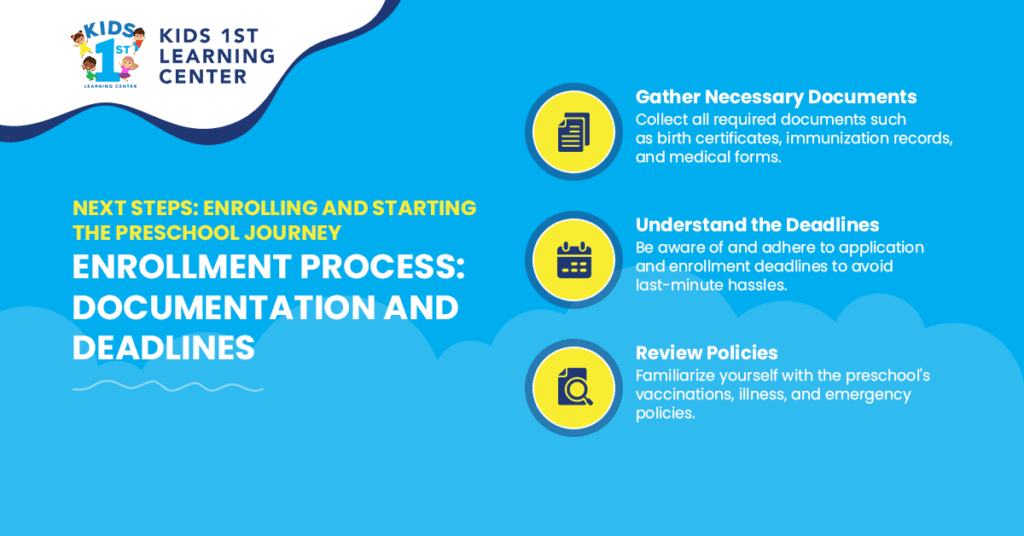
Embarking on the preschool journey involves clear steps, from the initialenrollment to the first exciting week. This section provides a detailed overview of the enrollment process, including essential documentation and deadlines, and sets expectations for what the first week will look like for your child. Understanding these phases can help ensure a smooth start to yourchild’s educational experience.
Enrollment Process: Documentation and Deadlines
The enrollment process for preschool is a crucial step that requires careful attention to detail. To ensure a smooth registration, consider the following:
- Gather Necessary Documents: Collect all required documents such as birth certificates, immunization records, and medical forms.
- Understand the Deadlines: Be aware of and adhere to application and enrollment deadlines to avoid last-minute hassles.
- Review Policies: Familiarize yourself with the preschool’s vaccinations, illness, and emergency policies.
This organized approach will help secure your child’s place and avoid administrative complications.
What to Expect the First Week: Setting the Stage for Success
The first week of preschool is pivotal for your child’s adaptation to a new environment. Here’s how to prepare:
- Gradual Adjustment: Expect a period of adjustment as your child gets used to new people and routines.
- Communication with Teachers: Establish a good communication line with your child’s teachers to receive updates and provide any necessary insights to help your child settle in.
- Emotional Support: Be ready to provide extra comfort as your child transitions. Reassure them about the exciting experiences and new friends awaiting them.
By anticipating these aspects, you can help your child navigate their first week more easily and confidently. Navigating the enrollment process and the initial days of preschool can be challenging, but with the proper preparation, you can make this transition as smooth as possible for your child.
Key Takeaways for Choosing the Right Half-Day Preschool for Your Child
As you select the perfect half-day preschool for your child, remember that your choices now pave the way for their future learning experiences. From assessing educational programs to navigating enrollment processes, each step is vital in shaping a supportive and enriching environment for your little one. With the right preparation and understanding, you can ensure a fine transition that will set the stage for many successful school years.
Ready to take the next step? Contact Kids 1st Learning Center today at (818) 873-0133 or visit our contact pageto learn about our programs and how we can help your child thrive.


